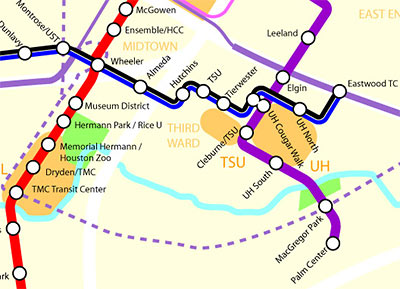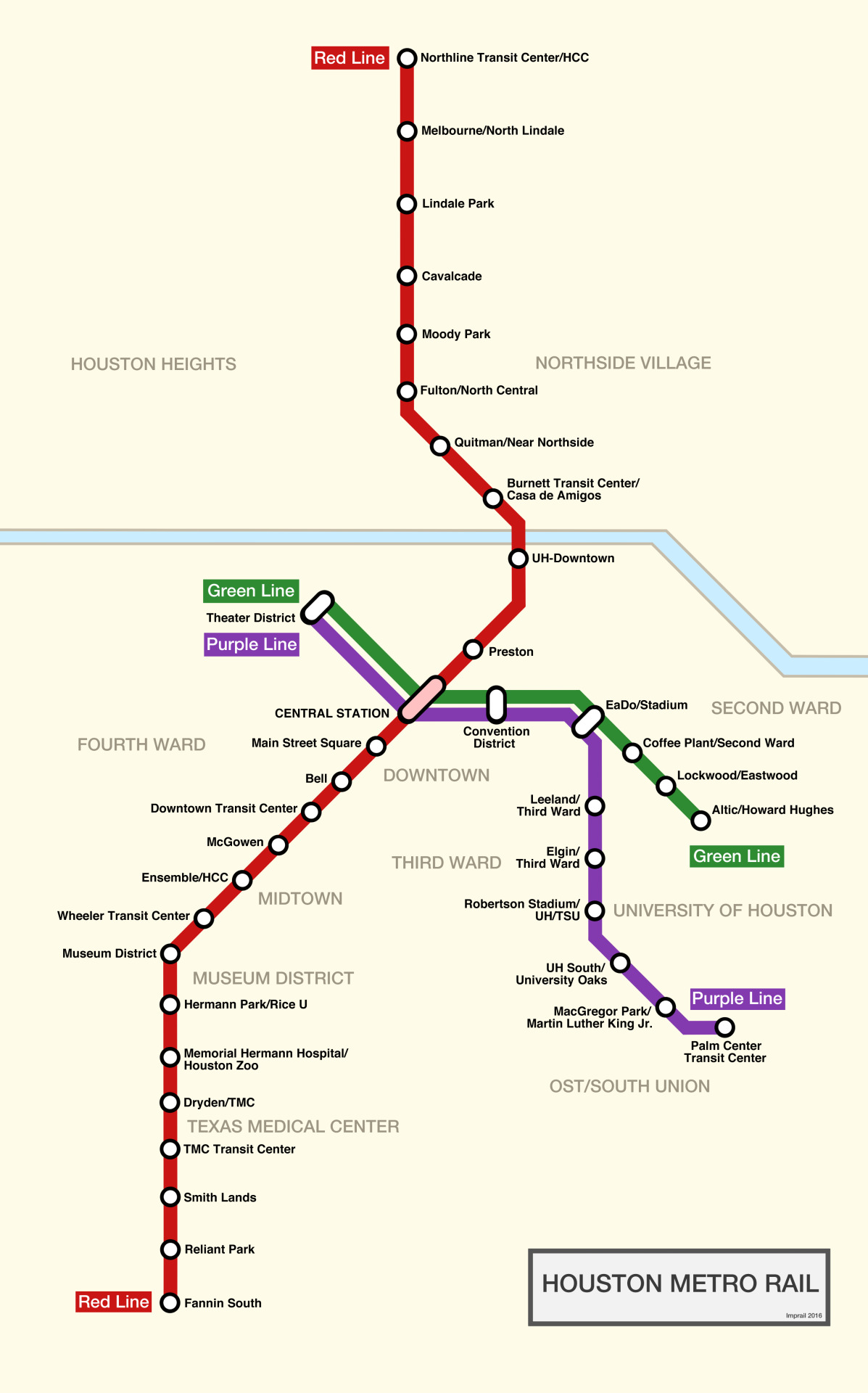

The appeal overruled all but one issue raised by Scarbrough (which it modified), upholding the original decision to give METRO jurisdiction on Richmond to lay the rails.

Īn opinion was issued August 31, 2010, on an appeal made by Daphne Scarbrough, who owns a business on Richmond Avenue, on a lawsuit she raised May 23, 2007, regarding METRO's jurisdiction and its decision to align the rail down the center of Richmond.

Ultimately METRO revised the plans so that the line does not go through the neighborhood. The homeowners of the upper-income Afton Oaks subdivision opposed a proposed expansion of the University Line through the neighborhood. The homeowners of Afton Oaks opposed plans for the University Line to go through the subdivision METRO countered the lessons it had learned while building the Main Street line would be applied to the construction of the University line, and further, the route had not yet been finalized options included alignment along Westpark, Westheimer, or the Southwest Freeway. Opposition Īlarmed by the disruption to businesses along Main Street during the construction of the Main Street line, Richmond Avenue business owners formed a coalition in 2004 and met with METRO, urging the agency to move the route to Westheimer Road. After the passage of the measure, METRO introduced plans for the University (renamed from Westpark) line as part of Phase 2 of the Metro Solutions Plan in June 2004. One of the six proposed light rail segments as a Phase 2 to expand the Main Street line, then under construction, was the "Westpark" corridor, extending from the existing Wheeler station west to Hillcroft 6.6 mi (10.6 km) and 4 stations. Metro’s rail system will triple in size, operating about 23 miles of track once the East End (Green) and Southeast (Purple) Lines open for passenger service later this year.The METRO Solutions Transit System Plan (aka Metro Solutions Plan) was placed before voters on the Novemballot. Ridership on the North Line is expected to increase when two other rail lines open, the Burnett Transit Center is completed and a system reimagining plan is approved and implemented. Ridership on Main Street’s Red Line surpassed 100 million boardings in 2013, four years ahead of forecasted projections.

“It’s providing better connectivity and improving the customer experience on many fronts.” “Though these are early numbers, they’re a good indication of how well the extension has been received by the community,” said Tom Lambert, interim Metro president and CEO. “This speaks volumes about the value of rail in the community, and how expanding the reach of one form of transit enhances others like our bus service,” said Metro Board Chairman Gilbert Garcia. That’s 1,600 more than what is forecasted to be the average daily ridership by the end of the 2014 fiscal year, according to the transit agency.
Metro rail route houston full#
In January, its first full month of service, the North Line averaged 4,200 weekday boardings. The event came just days before the 10-year anniversary of the existing Red Line. On December 21, 2013, Metro launched its 5.3-mile North Line. Early numbers show the public is embracing Metropolitan Transit Authority of Harris County’s (Metro) North Line extension, which surpassed ridership projections by 62%.


 0 kommentar(er)
0 kommentar(er)
